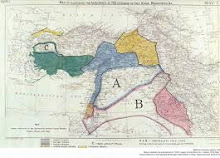Ingham's list developed eponymous themes of
James Cook 1728-79, explorer
William Wilberforce 1759-1833, campaigner and abolitionist
John Harrison 1693-1776, clockmaker
Edwin 585-633, saint and king
Alcuin 732-804, scholar
John Wycliffe 1330-84, theologian
William Bradford 1590-1657, pilgrim father
John Smeaton 1724-92, engineer
William Bateson 1861-1926, geneticist
Joseph Bramah 1748-1814, inventor
Augustus Pitt-Rivers 1827-1900, anthropologist
Joseph Priestley 1733-1804, scientist
Henry Briggs 1561-1630, mathematician
George Cayley 1773 -1857, air pioneer
John Cockroft 1897-1967, scientist
Fred Hoyle 1915-2001, astronomer
Almroth Wright 1861-1947, doctor
Amy Johnson 1903-41, aviator
Lady Boothroyd 1929 -, politician
Prime ministers Rockingham 1730-82, Asquith 1852-1928 and Wilson 1916-95
Titus Salt 1803-76, industrialist
Michael Sadler 1861-1943, educationalist
John Curwen 1816-80, musician
Thomas Fairfax 1612-71, soldier
St John Fisher 1469-1535, martyr
Guy Fawkes 1570-1606, traitor
Thomas Chippendale 1718-79, furniture maker
Percy Shaw 1890-1976, inventor
Harry Brearley 1871-1948, inventor
J Arthur Rank 188-1972, film maker
Emily Brontë 1818-48, writer
William Congreve 1870-1729, playwright
JB Priestley 1894-1984, writer
Alan Bennett 1934-, writer
Charles Laughton 1899-1962, actor
Andrew Marvell 1621-78, poet
Ted Hughes 1930-98, poet
David Hockney 1937-, artist
Henry Moore 1898-1986, sculptor
Frederick Delius 1862-1934, composer
John Barry 1933-, film music composer
Janet Baker 1933- singer
Leonard Hutton 1916-90, cricketer
Fred Truman 1931-, cricketer
Brian Clough 1935-2004, footballer and manager
Alan Hinkes 1954-, mountaineer
Barbara Harrison 1945-68, air stewardess
